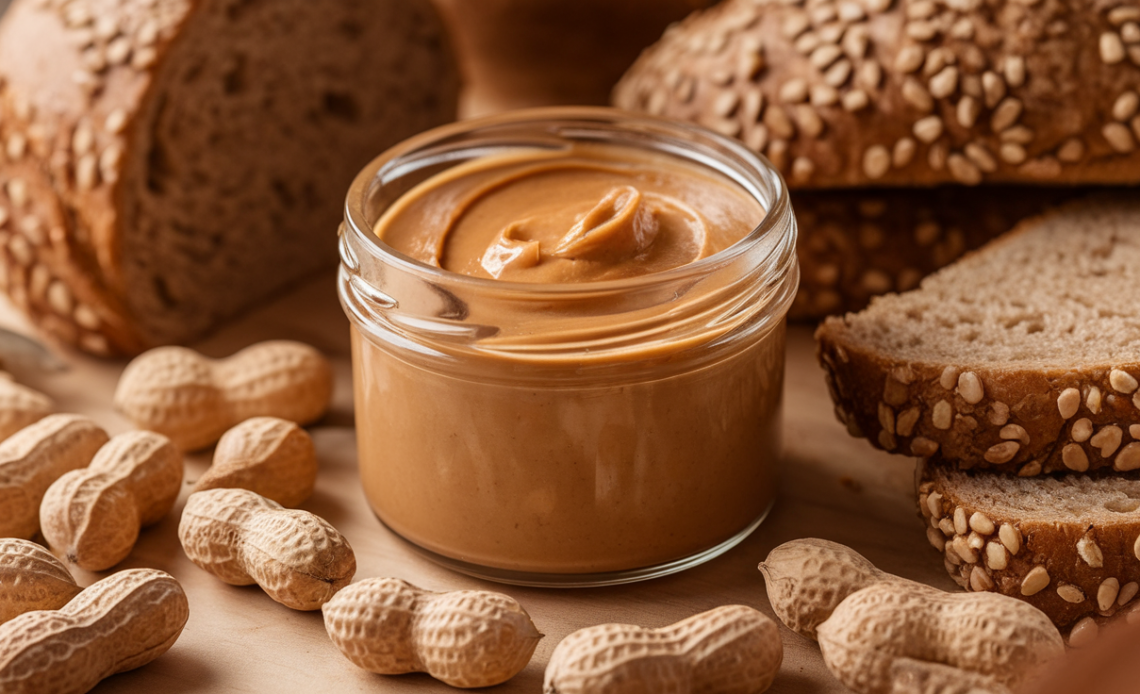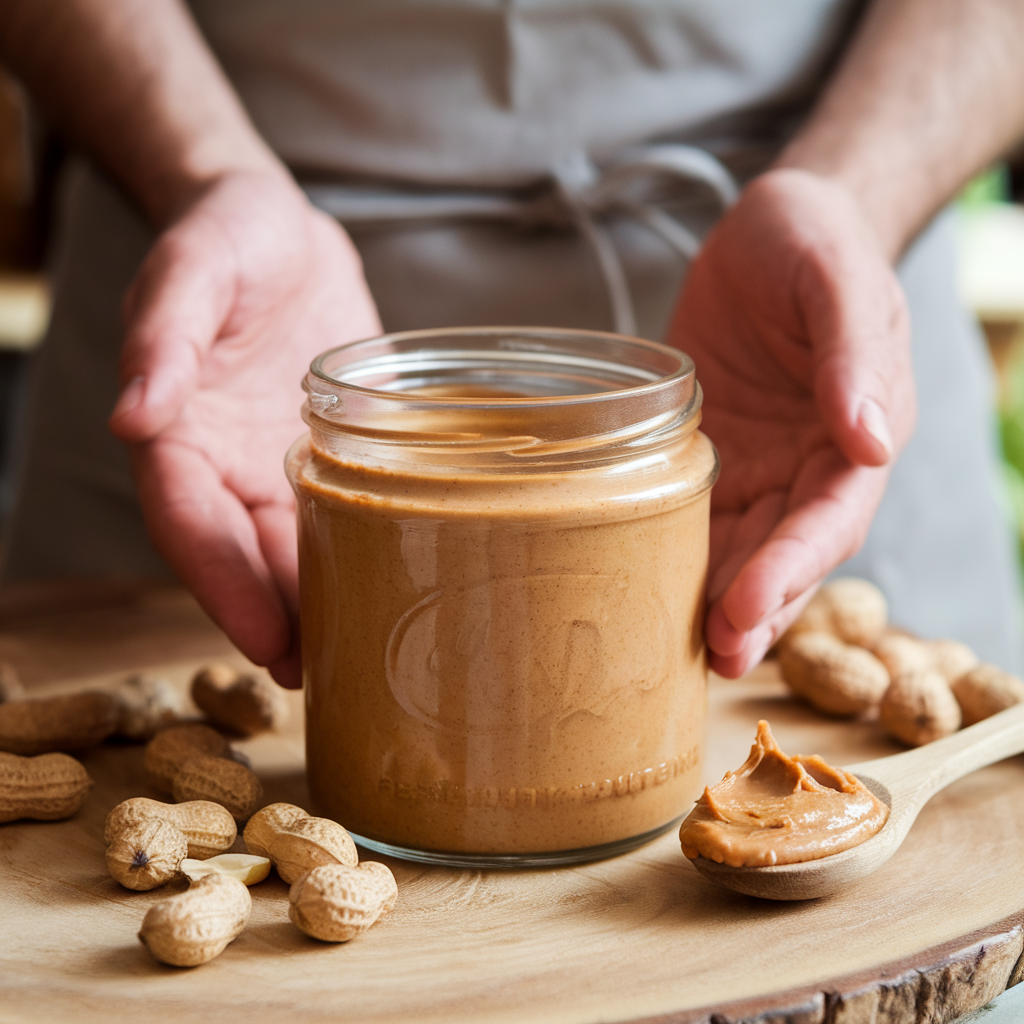
Peanut butter is a beloved spread that adds a creamy, nutty texture to a variety of dishes. It’s not just a great topping for toast or a dip for fruits and veggies, but it’s also a key ingredient in many delicious snacks and desserts. However, store-bought peanut butter can often be packed with added sugars, unhealthy fats, and preservatives. That’s why making your own peanut butter at home is not only a healthier choice but also incredibly easy and cost-effective.
In this guide, we’ll walk you through the step-by-step process of making healthy homemade peanut butter, offering you a nutritious and customizable alternative to store-bought options. Whether you’re looking for a keto healthy version, experimenting with nut butter recipes, or simply wanting to enjoy the satisfaction of creating homemade foods, making peanut butter at home is a rewarding endeavor.
We’ll also explore how to use a food processor to create smooth, creamy peanut butter, share food processor ideas for different variations, and discuss the benefits of homemade things in general, especially when it comes to food. From nut butter recipes to tips on storing and using your homemade peanut butter, we’ve got everything you need to make this delicious and versatile spread.
Why Make Peanut Butter At Home?
There are plenty of reasons to make peanut butter at home. Not only is it incredibly easy, but it also gives you control over the ingredients, allowing you to create a spread that’s healthier and better suited to your personal taste preferences. Let’s break down the key benefits of making your own peanut butter:
1. No Added Sugar or Preservatives
Many commercial peanut butters are filled with added sugars, unhealthy oils (like palm oil), and preservatives to increase shelf life. By making peanut butter at home, you can skip the added sugars and other artificial ingredients, creating a clean and wholesome product. This is especially important if you’re following a keto healthy diet or trying to limit your intake of refined sugars.
2. Customizable Flavors and Consistencies
When you make your own peanut butter, you have the freedom to experiment with different flavors and textures. You can add a touch of honey or maple syrup for sweetness, or opt for a savory peanut butter with sea salt and even spices like cinnamon or cayenne pepper. You can also adjust the consistency—smooth, chunky, or a combination of both—depending on your preferences.
3. No Unhealthy Fats
Store-bought peanut butter often contains unhealthy trans fats or hydrogenated oils to enhance its texture. By using natural peanuts or roasted peanuts to make your own peanut butter, you eliminate these unhealthy fats. You can even use a food processor to blend the peanuts into a smooth paste, which retains the healthy fats from the nuts themselves—primarily monounsaturated fats—which are beneficial for heart health.
4. Cost-Effective
Buying peanut butter at home can save you money in the long run. A jar of store-bought peanut butter can be expensive, especially if you opt for organic or natural varieties. When you make peanut butter yourself, you can purchase peanuts in bulk, which is more cost-effective and makes for a larger quantity of spread.
5. Packed with Protein and Nutrients
Peanut butter is a rich source of plant-based protein, which is essential for muscle repair and growth. It also contains fiber, vitamin E, magnesium, phosphorus, and potassium, making it a nutritious addition to your diet. By choosing natural, high-quality peanuts for your homemade spread, you ensure that you’re getting all of these nutrients in their purest form.

Ingredients for Healthy Homemade Peanut Butter
Making healthy homemade peanut butter requires just a few basic ingredients, all of which are natural and packed with nutrients. Here’s what you’ll need:
Basic Ingredients:
- 2 cups of roasted peanuts (unsalted, preferably organic for the best flavor and quality)
- 1-2 tablespoons of oil (such as peanut oil, almond oil, or coconut oil—optional, depending on your desired consistency)
- 1/2 teaspoon of sea salt (optional, to enhance the natural flavor of the peanuts)
- 1 tablespoon of honey or maple syrup (optional, for sweetness)
- 1/4 teaspoon of vanilla extract (optional, for added flavor)
Optional Ingredients for Variations:
- Cinnamon or cocoa powder for extra flavor
- Cayenne pepper or chili powder for a spicy twist
- Chopped dark chocolate or raisins for a sweet treat
- Ground flax seeds or chia seeds for added nutrition
These ingredients are simple and wholesome, allowing you to create a nut butter recipe that aligns with your dietary preferences and taste buds. Whether you choose a basic recipe or opt for some fun flavor twists, homemade peanut butter is a nutritious and satisfying option.
Step-by-Step Instructions to Make Peanut Butter
Making peanut butter at home is incredibly simple. With just a food processor, you can transform roasted peanuts into a smooth and creamy spread in a matter of minutes. Here’s a step-by-step guide to making your own healthy peanut butter:
Step 1: Prepare the Peanuts
Start by placing 2 cups of roasted peanuts into the bowl of your food processor. If you’re using unsalted peanuts, you can add a pinch of sea salt at this point to enhance the flavor. For an extra touch of sweetness, you can also add a tablespoon of honey or maple syrup.

Step 2: Blend the Peanuts
Turn on the food processor and blend the peanuts for about 2-3 minutes. The peanuts will begin to break down into a crumbly consistency at first. Keep scraping down the sides of the bowl with a spatula to ensure everything is evenly blended.
Step 3: Add Oil for Smoothness
After the peanuts have broken down, add a tablespoon of oil (such as peanut oil, almond oil, or coconut oil) to help achieve a smoother texture. Continue processing until the peanut butter reaches your desired consistency. For a thicker, chunkier texture, stop blending sooner. For a smoother spread, continue to blend until it’s creamy.
Step 4: Adjust Consistency and Flavor
Once the peanut butter has reached your preferred texture, taste it and adjust the seasoning as needed. You can add more salt, a little more sweetener, or even a dash of vanilla extract for extra flavor. Blend again for a few seconds to incorporate.
Step 5: Store Your Peanut Butter
Transfer the freshly made peanut butter into an airtight container. Store it in the refrigerator for up to 2-3 weeks. As homemade peanut butter does not contain preservatives, it’s best to consume it within this time frame.
Variations on Homemade Peanut Butter
One of the best things about making peanut butter at home is the ability to customize it to suit your taste. Here are some creative variations and food processor ideas to elevate your homemade spread:
1. Spicy Peanut Butter
For those who love a bit of heat, add a pinch of cayenne pepper, chili powder, or even a dash of hot sauce to your peanut butter. This spicy version pairs wonderfully with a low-carb lettuce wrap, or you can use it as a spicy dip for celery and carrots.
2. Chocolate Peanut Butter
If you’re a fan of chocolate and peanut butter together, try adding a tablespoon of cocoa powder or dark chocolate chips to the mixture. Blend until smooth for a rich, indulgent treat. This chocolate peanut butter makes a great filling for homemade sandwiches or a topping for apple slices.
3. Cinnamon Peanut Butter
For a warm, comforting flavor, add ground cinnamon to the peanut butter. This variation is perfect for spreading on toast, adding to oatmeal, or using as a dip for banana slices.
4. Crunchy Peanut Butter
If you prefer a crunchy peanut butter, simply reserve a handful of roasted peanuts before blending. Once the peanut butter is smooth, stir the reserved peanuts into the spread for added texture and crunch.
5. Nut and Seed Butter
For a more nutrient-dense spread, try adding other nuts or seeds to the mix, such as almonds, cashews, or chia seeds. This creates a multi-nut nut butter recipe that’s packed with healthy fats and extra protein. Simply add your favorite nuts or seeds to the food processor and blend together with the peanuts.

Benefits of Homemade Peanut Butter
Making peanut butter at home offers several health benefits compared to store-bought options. Here are some of the key advantages:
1. No Added Sugar or Unhealthy Fats
By making peanut butter at home, you eliminate the need for added sugars, preservatives, or hydrogenated oils that are commonly found in store-bought brands. You have full control over the ingredients, ensuring that you’re consuming only healthy fats from peanuts and oils you choose.
2. Rich in Protein and Healthy Fats
Homemade peanut butter is a great source of plant-based protein and healthy fats, which are essential for maintaining muscle mass, supporting brain function, and boosting energy levels. Peanut butter also provides monounsaturated fats, which are known for promoting heart health.
3. Customizable to Your Dietary Needs
Making peanut butter at home allows you to tailor it to your specific dietary needs. Whether you’re following a keto healthy diet, need a vegan option, or are looking for low-carb peanut butter, you can easily adjust the ingredients to suit your preferences.
4. Packed with Nutrients
Peanut butter is rich in vitamins and minerals such as vitamin E, magnesium, potassium, and phosphorus. These nutrients help support your immune system, promote bone health, and improve your energy levels.
Conclusion: A Simple, Delicious, and Healthy Alternative
Making peanut butter at home is a fun and rewarding experience. Not only do you get to enjoy the satisfaction of creating something from scratch, but you also get to enjoy a spread that’s healthier, fresher, and more customizable than anything you’ll find in a store. Whether you’re looking to make low-carb peanut butter, keto healthy variations, or simply want to enjoy homemade foods that are clean and nutritious, homemade peanut butter is the perfect option.
With just a few basic ingredients and a food processor, you can make a spread that’s packed with flavor, protein, and healthy fats. And the best part? You can experiment with different flavors and textures to create a peanut butter that suits your exact preferences. From nut butter recipes to healthy homemade things, making peanut butter at home is a great way to enhance your meals and snack time.




